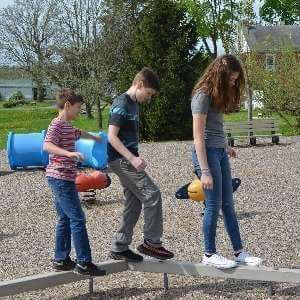Before I had a son with autism and then became a Behavior Analyst, I never imagined how hard it would be to teach a child to blow his nose. Today I’m going to break down the steps and give you some easy strategies to help you teach your client or child with autism to blow their nose.
Each week, I provide you with some of my ideas about turning autism around, so if you haven’t subscribed to my YouTube channel, hit the subscribe button and notification bell right now.
In addition to autism, many children, including my son Lucas, also have severe allergies. One of my clients, I’ll call him Andy, had such bad allergies that he would actually get shiners under his eyes and be very congested in the springtime for months. I have done a few prior blogs on medical issues, since I’m a Registered Nurse as well as a Behavior Analyst. In my autism medical blogs, I give you some pointers on ruling out medical issues, teaching children how to tell you they’re in pain and all sorts of things. But, today, I specifically just want to cover how to teach nose blowing, which is such an important skill, especially for kids like Andy with significant allergies.
Andy was about five at the time. He was an intermediate learner on the VB-Mapp. He was talking, but not yet conversational, but he was learning very quickly. I’ve also taught multiple clients with autism to blow their noses. Because of my background with nose blowing, I thought Andy would be a really good candidate to learn this skill.
Before I get started with the steps we used for Andy, let’s talk about some prerequisite skills. I found that children need some basic skills before we can teach a complex skill, such as nose blowing. Some of these skills include the ability to follow directions, to imitate, and to mand, or ask for things they need. Andy had all these basic skills, so the first step to increasing or decreasing any behavior is assessment. Can a child blow his nose at all? Take tissues. Can he just take a tissue and wipe his nose? Can he throw a tissue in the trash can when he’s done?
Once we have these assessment steps done, then we need to make a plan to teach this skill. We should really make a plan to teach for very short periods every day. The problem with nose blowing is that people only think about teaching blowing noses when the child is actually sick. This is a problem because when kids are really congested, they’re not ready to learn. They might be having pain and pressure, and that’s not the time to teach initial nose blowing.
Part of the plan includes gathering some equipment. I found that actually a clipboard is a great idea to start helping your child with autism to blow their nose. Some people recommend just having the child blow things on a table, but the nice thing about a clipboard is that the mouth blowing can be isolated below the clip board. Then, you get something like a cotton ball and you can have the child take a deep breath, close his mouth, and then blow through his nose, and blow the cotton ball. You can even tear the cotton ball into smaller pieces to make it a little easier. You can also blow pencils and bigger objects. Again, kind of make a race with it. You can each have your own clipboard. I mean, there’s just a number of ways to make this kind of fun and measurable, and they can actually see what they’re blowing.
You then can isolate each nostril and close up one nostril, close their mouth and blow. We do also want to teach with a tissue. So, the child can have a tissue and I can have a tissue. We want to teach holding the tissue, squeezing nostrils, squeezing one nostril, and taking a deep breath, and closing your mouth before you attempt to blow. As you can see, this is a lot more complicated than you may have thought.
- Get started today. Assess where your child or client is at.
- Make a plan.
- Gather some equipment that you have at home.
- Practice daily sessions. I usually find just three-minute or five-minute sessions, like, “Let’s practice blowing your nose”. We’re going to do these quick, quick little tasks and get you stronger and work on this while you have the energy, while you’re not sick.” Then, you have to generalize it to tissues. The quick learners, the intermediate learners that are quick to pick up skills sometimes surprise you and learn very quickly.
- Then, you have to generalize it when they are sick and when they are really congested because you have to blow probably a little bit harder to get that mucus out.
Hopefully you can practice some of these skills and get your client or child with autism to blow their nose.
To get started turning things around for any child with autism, I’d love it if you would download my free three-step guide to get you started. This guide covers three steps you can take today to help any child or client, whether they’re a toddler or a teen, and whether you’re a novice parent or a seasoned autism professional. I know you’ll find some helpful advice in this guide.
If you enjoyed this video on how to get your child with autism to blow their nose, I’d love it if you would share this video, leave me a comment, and subscribe to my channel. I’ll see you right here next week.






